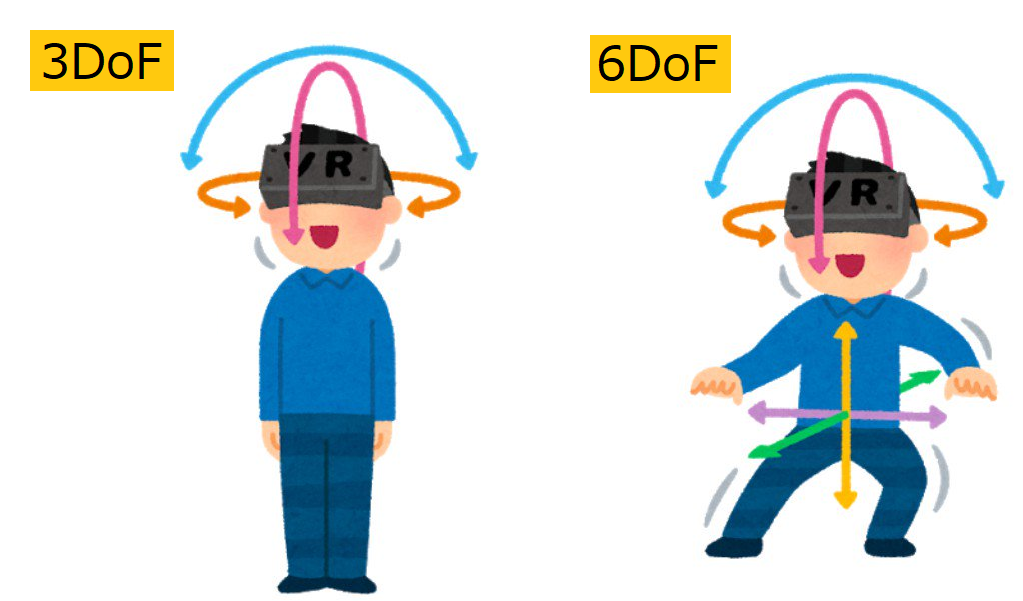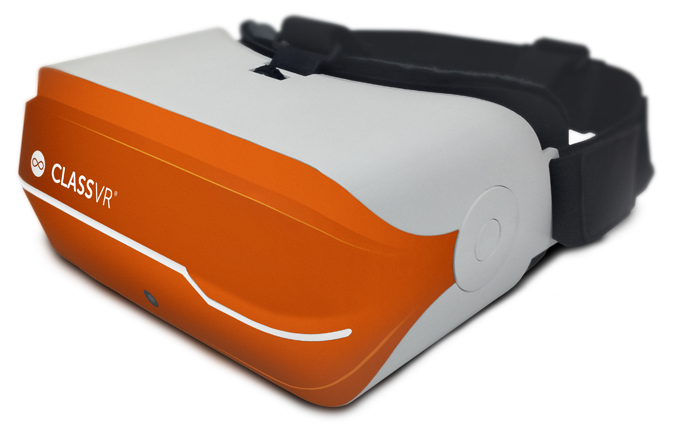New head-mounted displays (HMD) are being developed and released each year. Finding a headset which meets your requirements for the classroom can be challenging. Take the quiz to explore which head-mounted display is recommended for your teaching practice or explore our guide below which explains the different types of headsets, their technological specifications, and their flexibility regarding the availability of educational experiences.
HOW DO HMDS WORK?
It is important to understand how head-mounted displays (HMD) work before looking into the purchase of headsets for the classroom. All headsets use head tracking to orient the position of the user’s head in the virtual environment to follow the user’s point of view. This allows for a full 360 degree rotation within the virtual space to explore and discover. However, not all HMDs allow for full body movement and control within the space. Explore more about HMDs through the following subsections.
Depth of Field
3DoF: This means there are three available depths of fields for the player, all involving head movement. The user can look in every direction within the HDM, but cannot move their physical form within the space.
6DoF: This means there are six available depths of fields for the player, involving the entire body. Three belong to the head, to view in every possible direction, and three belong to the body or orientate movement and height.

Standing Play versus Positional Tracking
Some HMDs allow for standing play, meaning the player must remain in a fixed position, while others allow for positional tracking. Positional Tracking allows the player to physically walk around a pre-set space which is limited by the room size and cable length of the HMD if the headset is connected to a gaming computer. Boundary lines can be set-up to ensure the safety of players so they do not reach out or walk past the edge of the pre-determined boundary for game play.
CATEGORIES OF HMDS
Smartphones in an HMD

This system uses a personal smartphone, where you can download applications directly to the mobile device, then insert the device into an HMD such as Google Cardboard (which must be held by the user) or a personal headset holder (which enables hands free navigation). Some HMDs for smartphones come with optional controllers for more opportunities for interaction in VR experiences. This format of VR only allows for 3DoF and seated or standing play. The smartphone must meet the minimum running requirements of the application and must fit within the headset holder. The average screen size for these headsets is four to six inches, however there are exceptions for headsets built specifically around certain models of phones.
Stand-Alone HMD

These contain the entire system within the HMD. Applications are downloaded directly within the HMD. Different models offer availability of 3DoF or 6DoF, alongside both standing play and positional tracking. Be sure to examine the specifications of the model to ensure it meets the requirements for the applications you are looking to download. Many education oriented stand-alone HMDs come with customized programs designed specifically for the headset, limiting the availability of programs which can be played. However these types of headsets come with technical support, professional development opportunities and are easier to use in educational environments due to the lack of cables and the reduced cost.
HMD and a Gaming Computer

These are the strongest caliber of VR headsets on the market with unbelievable definition and graphic quality, but they come with a financial cost. All of these headsets require a gaming computer ($2,500 – $6,000) which meets their running specifications and the headset must be attached to the computer at all times to run. However, these HMDs are ideal for VR development and offer the highest level of immersion into virtual spaces. They all function with 6DoF and allow for both standing play and positional tracking. Many of these headsets allow for additional body trackers for full avatar movement in virtual spaces alongside the possibility of being wireless with an additional kit.
EXPLORE AVAILABLE TECHNOLOGY
Headsets – Head-Mounted Displays
Applications – Places to Discover and Download Experiences